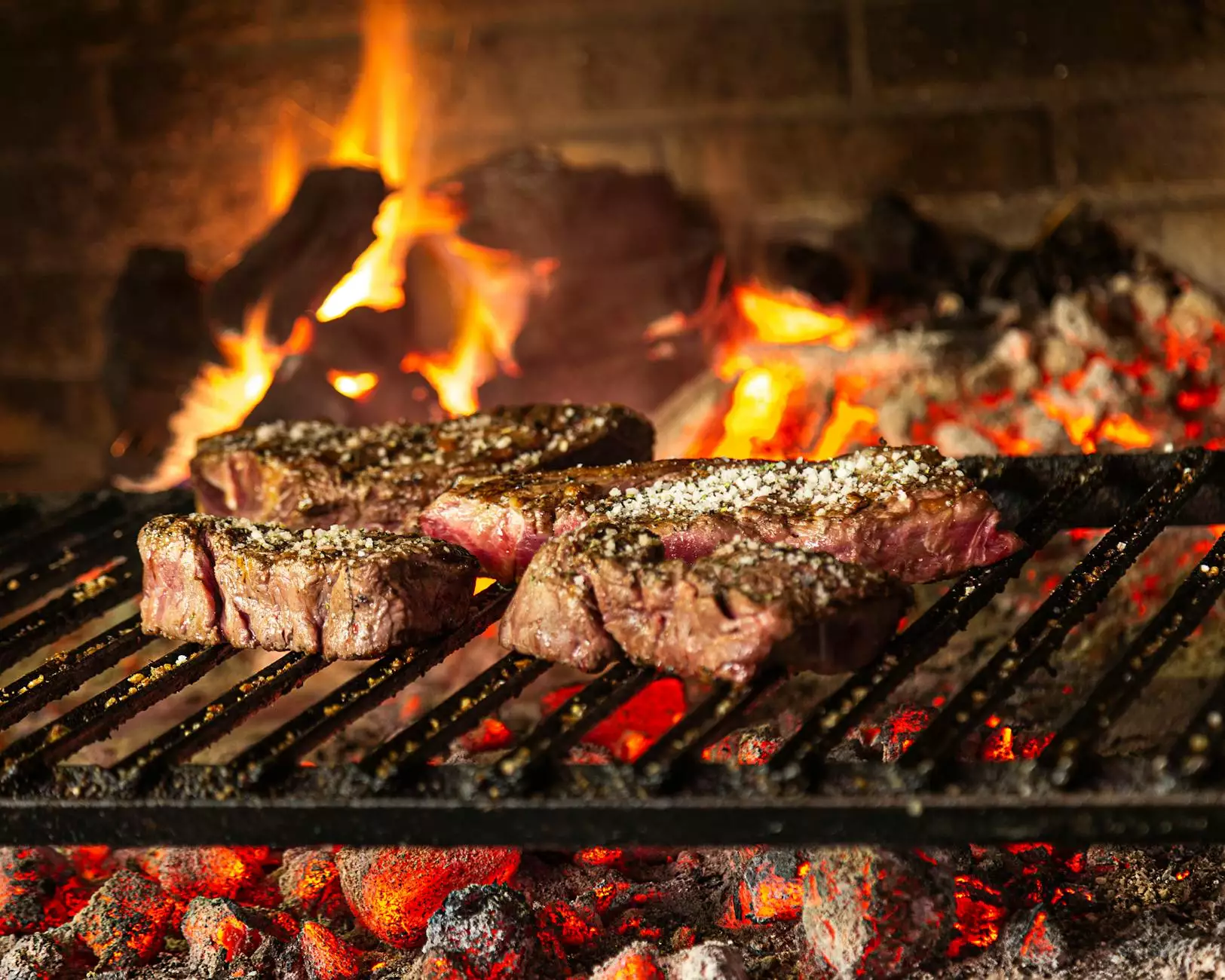Ultimate Cooking Steak Temperature Chart for Perfect Cuts

Cooking the perfect steak is an art as much as it is a science. Every steak lover knows that the key to a great steak lies not only in the quality of the meat but also in the cooking technique and, crucially, in the cooking temperature. In this comprehensive guide, we'll explore the cooking steak temperature chart, providing you with the essential information to achieve succulent, mouthwatering steaks that will impress your family and friends.
Understanding Steak Cuts and Their Ideal Cooking Temperatures
There are several cuts of steak, each offering unique flavors and textures. When deciding on how to cook your steak, understanding these variations is critical. Here’s a quick breakdown of popular steak cuts and their ideal internal temperatures:
- Filet Mignon: A tender and juicy cut ideal for special occasions.
- Ribeye: Known for its marbling and bold flavor, perfect for grilling.
- Sirloin: A leaner cut that provides excellent flavor at a lower price point.
- T-bone: A combination of tenderloin and strip steak, great for those who can’t choose just one.
- Flank Steak: A flavorful cut that is best when marinated and grilled.
Key Cooking Temperatures
To cook a steak to perfection, it is essential to understand the various degrees of doneness and the corresponding internal temperatures. Here’s a cooking steak temperature chart to guide you:
Doneness LevelInternal Temperature (°F)DescriptionRare120-125Very red, cool centerMedium Rare130-135Warm red centerMedium140-145Warm pink centerMedium Well150-155Smaller pink centerWell Done160 and aboveNo pink, very firmPreparation: Getting Ready to Cook
Before you even think about reaching for your grill or skillet, it is essential to prepare your steak properly. Here are some tips:
- Choose the Right Cut: Depending on your preference, select a cut that suits your taste and occasion.
- Let It Rest: Remove your steak from the refrigerator about 30 minutes before cooking to allow it to come to room temperature.
- Season Generously: Use salt, pepper, and your favorite spices to enhance the natural flavors of the steak.
- Preheat Your Cooking Surface: Whether grilling or using a cast iron skillet, ensure it’s hot enough to sear the steak properly.
Cooking Techniques: Searing, Grilling, and Broiling
There are several effective methods to cook your steak, each offering unique benefits. Here are the three most popular techniques:
1. Grilling
Grilling is one of the most traditional and beloved methods for cooking steak. The high heat imparts a delicious char and flavor. Here are some tips for successful grilling:
- Oil the grill grates to prevent sticking.
- Cook with the lid closed for even heat distribution.
- Use tongs to flip your steak only once for better crust.
2. Searing
Searing in a skillet is an excellent way to develop a rich, caramelized crust. For perfect searing:
- Use a heavy-bottomed pan, preferably cast iron.
- Add a high smoke point oil, like canola or grapeseed oil.
- Don’t overcrowd the pan to maintain the cooking temperature.
3. Broiling
Broiling allows for cooking at high heat from above, similar to an upside-down grill. This method is perfect for steaks. To broil effectively:
- Ensure your oven rack is about 4-6 inches from the heat source.
- Keep a close eye on the steak to prevent overcooking.
- Let the steak rest for a few minutes after broiling to allow juices to redistribute.
Using a Meat Thermometer for Precision
Investing in a digital or instant-read meat thermometer is an essential tool for any serious steak lover. Here’s why:
- Accuracy: A thermometer takes the guesswork out of cooking.
- Consistency: Ensuring every steak comes out perfectly every time.
- Safety: Cooking to proper temperatures ensures food safety, particularly with certain cuts.
Resting Your Steak
Once removed from the heat, it’s crucial to allow your steak to rest. Resting helps the juices redistribute throughout the meat, leading to a more tender and flavorful bite. The recommended resting time is about 5-10 minutes, depending on the thickness of the steak.
Common Mistakes to Avoid
Even seasoned cooks can make mistakes when it comes to cooking steak. Here are common pitfalls to avoid:
- Cooking Cold Steak: Always bring your steak to room temperature before cooking.
- Forgetting to Season: Don’t skip salt and pepper; they enhance the flavor significantly.
- Cutting Too Soon: Resist the urge to cut into your steak immediately after cooking.
Conclusion: Mastering the Art of Steak Cooking
Achieving the perfect steak is within your reach with the right knowledge and techniques. By utilizing the cooking steak temperature chart and understanding the ideal methods for your chosen cut, you can create unforgettable meals that will satisfy any meat lover.
Whether you’re grilling for a summer barbecue or cooking an intimate dinner, these guidelines will help ensure that your steaks are cooked to perfection every single time. Embrace the process, learn from each experience, and most importantly, enjoy the delicious results!









